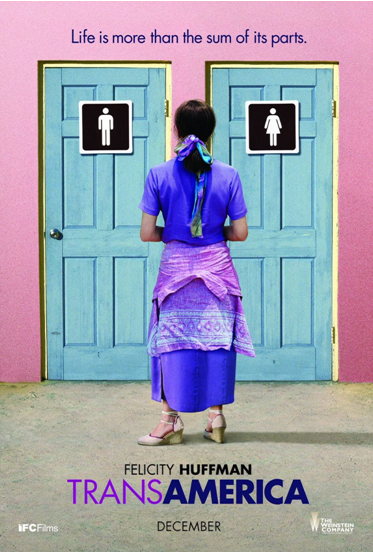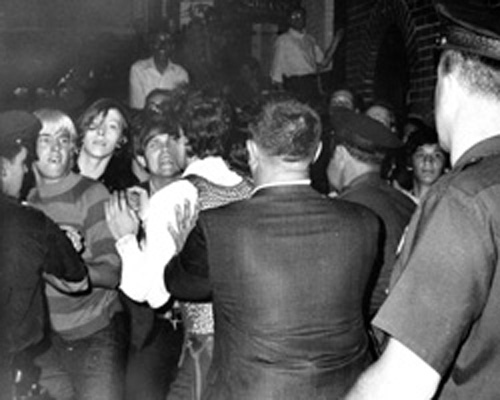Media depictions of trans people (almost entirely produced by non-trans individuals) tend to be fascinated by bodies. Since the (presumed) inappropriately gendered body is automatically monstrous, weird — or at the very least, available to be gawked at — the accessibility of trans bodies becomes a feature of their depiction.
A big thread that runs through most visual media depictions is a fixation on stripping trans people naked, implying the naked body as “true.” The Crying Game’s big reveal comes when Del undresses, while the penultimate moment of self-fulfillment for Bree in Transamerica is represented by her naked in the tub, touching her vagina. Pre-op Bree’s “parts” trap her in-between, as the movie poster so helpfully informs prospective audiences—without surgery, she’s “really” just a man in a dress.
Chest surgery fills much the same function for images of trans men. The body-centrism was so prevalent in the recently released Becoming Chaz, the documentary following Chaz Bono’s transition, one critic titled his review: “About a Boy or About a Body?” We see a similar interest in trans-bodies in Boys Don’t Cry and the teen soap Degrassi:
 (Still shot from film Boys Don’t Cry. Courtesy of Fox Searchlight Films)
(Still shot from film Boys Don’t Cry. Courtesy of Fox Searchlight Films)
 (Still shot from Degrassi. Courtesy of Alliance Atlantis)
(Still shot from Degrassi. Courtesy of Alliance Atlantis)
In all of these cases, the trans person’s emotional and social existence is tied to the state of their body. Bree can’t possibly be fulfilled until she’s had surgery and can strip naked in front of an audience. Bono can “really” be a man only after top surgery and he can go shirtless. Most importantly, trans people appear to have no life outside of their body, and their transition sometimes forms a narrative arc of beginning (bad body), middle (fixing the body), and end (good body). They are allowed to be a part of the story only as a person transitioning, their trans-status overwhelming everything about them that makes them unique individuals with complex personal stories.
——————————
Avery Dame is currently a master’s candidate in American Studies at the University of Kansas, where he studies media depictions of trans folks and trans vloggers on YouTube. He also blogs at the improbably named Ping Your Spaceman.
If you would like to write a post for Sociological Images, please see our Guidelines for Guest Bloggers.





